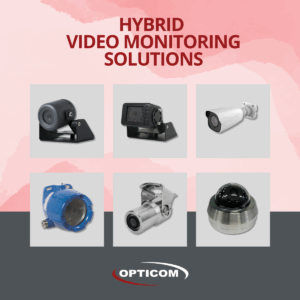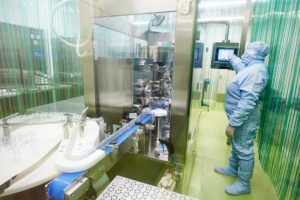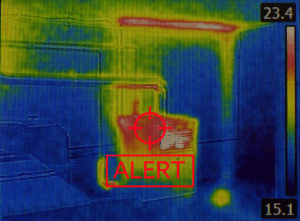In industrial facilities, video monitoring is important for enhancing security measures, improving production processes, and simply monitoring critical areas. The right video monitoring equipment can make or break the efficacy of systems. Today, we’re going to look at one detail that’s easy to overlook but matters for capturing the right footage: Camera lenses.
Let’s explore what you should consider when picking a camera lens to achieve unparalleled clarity, precision, and reliability in your video monitoring endeavors.
Understanding and Selecting Lenses
The camera lens is the front line of an industrial CCTV video monitoring system. The type of lens used determines what image the camera will capture and transmit to the system monitors and recording equipment. Lenses can be either fixed or varifocal (ie: adjustable) and can have either manual or automatic irises, which in turn control the amount of light passed through to the image sensor of the camera.
The aperture of an auto-iris lens is controlled by signals sent from the camera circuitry, which continually samples the light level and adjusts the iris to optimize the picture quality. All CCTV cameras have an automatic electronic shutter (AES) feature whereby the image sensor digitally corrects for changing light levels. Because of this feature, some fixed lens cameras with manual iris are capable of providing good image quality in low light conditions.
We can learn more about different types of camera lenses and how they impact video output.
Field of View
The area that a CCTV camera sees is known as its Field of View (FOV). The FOV is inversely proportional to the size of lens used. A lens with a focal length of 2.9mm provides a very wide angle viewing area, and this angle decreases as the focal length is increased.
Selecting the Correct Focal Length
Focal length measures the distance, in millimeters, between the optical center of the lens and the camera’s sensor. It plays a crucial role in determining the field of view, perspective, and magnification of a camera lens. For CCTV applications it is essential to match the focal length of the lens to the desired target.
A 2.9mm lens covers an area nearly 62 feet wide at a distance of 25 feet from the camera. A 12mm lens can capture less than 10 feet at the same distance. However the 12mm lens is capturing an image that is six times larger at 25 feet so it provides much greater detail at this distance.

1. Measure the distance from the camera to the desired target area
2. Determine the maximum width of the target
3. Find the lens size on the chart that most closely matches the distance/width measurements
4. Make a quick calculation if the distance is not on the chart. Ex. Target is 50 feet; a 4.3mm lens will have a horizontal FOV of 61 feet at this range (6.1 ft width at 5 ft. distance multiplied by 10 times the distance).
Types of CCTV Lenses
The right CCTV camera lens can significantly impact the effectiveness and reliability of your industrial video monitoring system. By understanding and considering the various lens options, you can optimize the camera’s performance to meet your specific monitoring requirements.
Board Camera Lenses
Board camera lenses have a fixed focal length. The iris is also fixed but the camera’s AES function does provide some compensation for light changes. Being both small and economical, these lenses have popularized many compact dome and bullet style CCTV cameras.
Fixed Lenses
Fixed lenses have a set focal length with a manually adjustable iris. Since the introduction of the varifocal lens, fixed lenses have all but disappeared from the CCTV industry.
Varifocal Lenses
Varifocal lenses are typically adjusted using set screws so that the installer can focus the camera to capture specific targets within the focal range of the lens. They typically feature an auto-iris that is controlled by a cable connected to the camera. These lenses simplify camera selection and allow for readjustment of the viewing area should the needs of the end user change.
It should be noted that in high vibration environments the adjustment screws on a varifocal lens will loosen causing the camera to lose focus. Fixed lens cameras are recommended for this type of installation.

Motorized Zoom Lenses
Motorized varifocal lenses are most commonly integrated into pan-tilt-zoom (PTZ) cameras and can be remotely controlled to scan large areas and zoom in on specific targets. Motorized zoom lenses provide the greatest range of focal length with some PTZ models providing up to 40X optical zoom. This is usually augmented by digital zoom functions within the operating software for further image magnification.
IR (Infrared) Corrected Lenses
IR light adversely affects the accuracy of color reproduction. IR cut filters are used in all color cameras to correct this problem. But day/night cameras (combination color and monochrome) and cameras using IR illumination should be equipped with IR corrected lenses to ensure the scene is accurately focused for the image sensor. This is necessary because the wavelengths of visible light and IR light are different. Using a regular lens on day/night or monochrome cameras will result in image distortion.
Help Choosing the Right Lenses
Whether you want to amp up security, streamline production, or simply keep a close eye on crucial areas, choosing the right camera lens is vital. But camera lenses are just one component of an industrial video monitoring system.
There are a lot of little decisions to make to optimize a system for a given facility. That’s where our Opticom experts come in—we’re always just a call away to help you choose the right configuration for your industrial video monitoring system.







